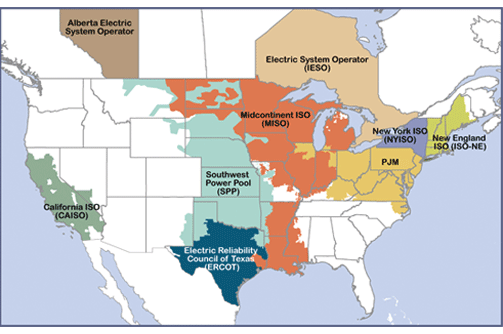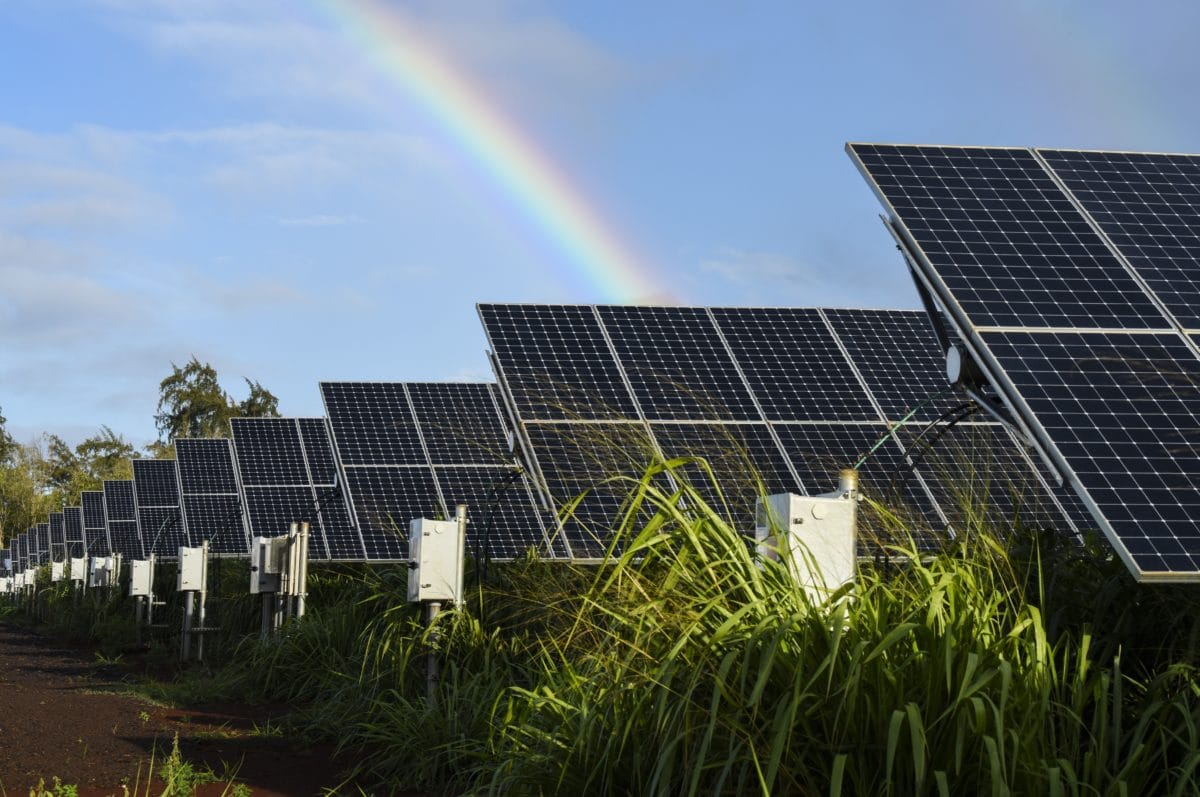Researchers at the U.S. Energy Department’s Berkeley Laboratory released a report assessing the contribution to reliability, trends in market value, and impacts on the bulk power system of solar deployed in the U.S. through the end of 2019.
The report covered the seven organized U.S. wholesale power markets and was based on historical hourly solar generation profiles for each individual plant larger than 1 MW, or county-level aggregate profiles for smaller-sized solar.
The report found that solar deployment in the California Independent System Operator (CAISO), where solar generation was equivalent to 18.7% of annual load in 2019, far exceeded the level in other ISOs.
The New England Independent System Operator (ISO-NE) had the second-highest penetration, with solar generation equivalent to 4.3% of annual load in 2019. All other ISOs had annual solar generation shares at or below 2%, the report said.
Solar’s contribution to the power system’s overall resource adequacy was measured by its capacity credit. While calculation methods vary across ISO/RTOs, summer capacity credits for solar in 2019 ranged from 45-76% of a system’s nameplate capacity, the report said. Capacity credits have remained largely stable over the past years except in CAISO, where solar’s capacity credit “steeply declined” in 2018.
The market value of solar, defined in the report as the sum of the energy and capacity values, varied across regions and years. This was largely because of variations in average energy prices and capacity market prices. The energy value, based on the hourly solar generation and real-time power prices at pricing nodes near each solar plant, was the largest component of the market value across ISOs.

Image: FERC
The report said that in 2019, the average energy value ranged from $24/MWh in CAISO to $60/MWh in the Electric Reliability Council of Texas (ERCOT). The report said that solar’s capacity value was based on the capacity credit of solar and the capacity price. In 2019, the capacity value was highest in the Southwest Power Pool ($25/MWh), although capacity prices there were based on estimates of bilateral capacity transactions rather than transparent organized capacity market prices. The capacity value was lowest in the Midcontinent Independent System Operator (less than $1/MWh).
The report said the market value of solar in CAISO declined between 2012 and 2019, both overall and relative to annual average energy and capacity prices. In 2012, solar’s market value in CAISO was 40% higher than the value of a flat block of power (representing the market value of a generator that operates at full nameplate capacity in all hours of the year).
By 2019, however, solar’s value was 31% lower than a flat block of power’s value. The report said this was because of a solar-induced shift in the timing of high and low energy prices, as well as a reduction in solar’s capacity credit. In contrast, the market values of solar in regions where solar penetrations were low did not decline relative to average prices.
As solar’s market value declined in CAISO, its cost—measured in the report by levelized power purchase agreement (PPA) prices—declined at a similar pace, maintaining solar’s overall competitiveness.
The report said that solar was more competitive in the PJM market and among non-ISO utilities where the market value in 2019 exceeded the levelized PPA price of contracts signed in 2019.
Solar was more competitive in ERCOT in 2018, and the report said the energy value of solar was “significantly higher” in 2019 than in 2018. It also said that data to report an average PPA price were insufficient in 2019.
In CAISO, the net load shifted to resemble the well-known “duck curve,” with particularly low net load during spring days and high ramps as the sun sets. Similar patterns emerged in real-time prices, with lower prices during the day and higher prices in the early evening.
Ancillary service requirements, particularly regulation reserves, have increased during the day, as have regulation prices. Negative real-time prices during low net-load days in the spring suggest growing challenges with providing flexibility, the report said. However, broader shifts in the system—including growing participation of utilities in the Western Energy Imbalance Market and variations in hydropower levels—appeared to ease some challenges in 2019 compared to 2017, even with greater solar deployment in 2019.
Impacts to the net load shape from solar were seen in a number of non-ISO utilities in the Western U.S.—for example, in Arizona and Nevada. The report said that with much less solar deployment in the other ISOs, solar impacts on the bulk power system were less obvious.
A free webinar summarizing key findings from the report will be held by the Berkeley Lab on February 23 at 10 a.m. Pacific/1 p.m. Eastern.
This content is protected by copyright and may not be reused. If you want to cooperate with us and would like to reuse some of our content, please contact: editors@pv-magazine.com.









By submitting this form you agree to pv magazine using your data for the purposes of publishing your comment.
Your personal data will only be disclosed or otherwise transmitted to third parties for the purposes of spam filtering or if this is necessary for technical maintenance of the website. Any other transfer to third parties will not take place unless this is justified on the basis of applicable data protection regulations or if pv magazine is legally obliged to do so.
You may revoke this consent at any time with effect for the future, in which case your personal data will be deleted immediately. Otherwise, your data will be deleted if pv magazine has processed your request or the purpose of data storage is fulfilled.
Further information on data privacy can be found in our Data Protection Policy.